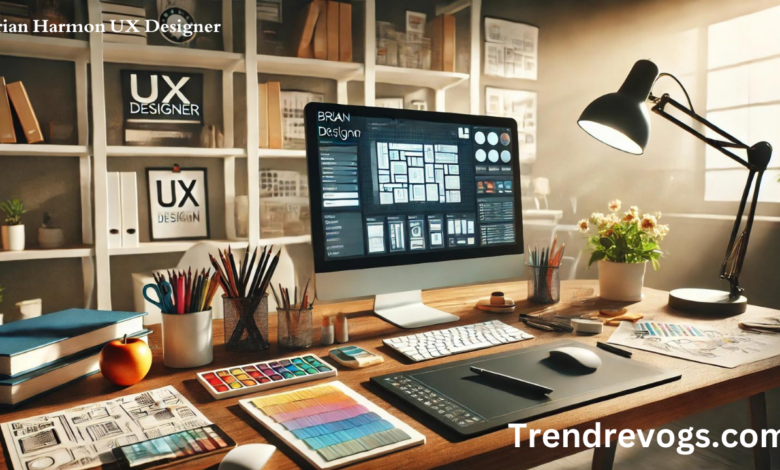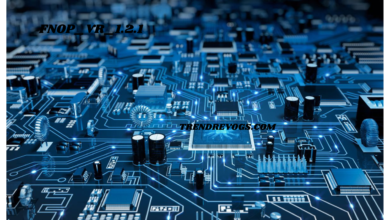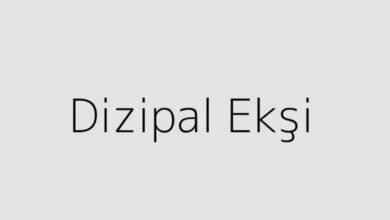Brian Harmon UX Designer: Mastering the Art of User Experience

Few names are as influential in the dynamic world of digital design as Brian Harmon. Known for his visionary approach and dedication to user-centred design, Harmon has redefined the UX landscape with innovative practices and a relentless focus on user experience. As a principal UX designer at Harman International, Harmon’s work is a testament to his expertise, creativity, and commitment to excellence. This article explores his journey, key contributions, and the principles that have shaped his career.
Early Career and Educational Background of Brian Harmon
Brian Harmon’s journey into UX design began with a solid educational foundation. Holding a bachelor’s degree in Graphic Design and a specialization in Human-Computer Interaction, he developed a deep understanding of user-centric design principles early on. His academic pursuits laid the groundwork for an innovative UI/UX design career, where he quickly moved from a junior designer position to a leadership role due to his exceptional skills and forward-thinking approach.
Harmon’s first notable role was as a junior designer, focusing on enhancing user interfaces through creativity and practicality. This initial phase of his career was marked by rapid growth as his designs started gaining recognition for their effectiveness in improving user engagement and satisfaction. His ascent in the field was driven by his ability to balance aesthetic appeal with functional usability, making him a standout figure in UX design.
Professional Milestones and Notable Projects
Several significant milestones mark Brian Harmon’s professional journey. At Harman International, where he serves as the Principal UI/UX Designer, Harmon has led various groundbreaking projects that have redefined user interactions and experiences. For example, his work on the Roon product management team showcases his ability to create a user interface that seamlessly blends visual appeal with functionality. As the Principal UI/UX Designer for Roon, Harmon’s work has been pivotal in maintaining the app’s reputation as a leader in the music industry, delivering an unparalleled user experience that appeals to music enthusiasts worldwide.
Another notable project led by Harmon is “Moodscape,” an innovative concept designed to enhance in-car user experiences. Moodscape integrates audio and visual elements tailored to the driver’s mood, demonstrating Harmon’s expertise in blending technology with user needs. This project reflects his ability to think beyond traditional UX boundaries and explore new ways of creating immersive experiences that engage users on multiple levels.
Brian Harmon’s Approach to UX Design
Brian Harmon’s approach to UX design is deeply rooted in user-centered design (UCD) principles. He prioritizes understanding the user’s context, goals, and pain points throughout the design process. His methodology is iterative, involving multiple rounds of user testing and feedback to refine designs. This process ensures that the final product meets and exceeds user expectations, providing a seamless and satisfying experience.
Harmon strongly advocates empathy-driven design, which involves putting oneself in the user’s shoes to understand their needs and motivations better. He emphasizes thorough user research, including interviews, surveys, and observational studies, to gather insights that inform the design process. This commitment to understanding the user has been a critical factor in Harmon’s success as a UX designer, enabling him to create solutions that genuinely resonate with users.
Challenges and Trends in Modern UX Design
In the rapidly evolving field of UX design, Brian Harmon has consistently stayed ahead of the curve by embracing new challenges and trends. He recognizes the importance of designing for a diverse user base with varying needs and preferences, requiring cultural awareness and sensitivity to different user experiences. As technology advances, Harmon is mindful of the need to stay updated with the latest tools and methodologies to create innovative and relevant designs.
Emerging technologies like artificial intelligence, virtual reality, and augmented reality are reshaping the UX landscape, offering new opportunities for creating immersive experiences. Harmon believes that the key to navigating these changes lies in maintaining a strong focus on the user, ensuring that every design decision enhances the overall experience. His approach is to involve cross-functional teams and stakeholders early in the design process, fostering collaboration and creativity while more effectively identifying potential issues.
Leadership and Mentorship in the UX Community
Beyond his design work, Brian Harmon is also a respected leader and mentor in the UX community. He fosters a collaborative environment where team members are encouraged to innovate and excel. His leadership style is characterized by a focus on growth and development, both for himself and for the designers he mentors. By sharing his knowledge and experience, Harmon has helped shape the careers of many aspiring UX designers, promoting a culture of continuous learning and improvement within the design community.
Harmon’s ability to inspire and guide designers has been instrumental in the success of numerous projects. He believes that great design is about individual talent and building strong, collaborative teams that work together to achieve common goals. This philosophy has earned him a reputation as a generous mentor and an effective leader dedicated to advancing the field of UX design.
Methodologies and Tools Used by Brian Harmon
Brian Harmon’s success in UX design is attributed to his mastery of various methodologies and tools. He is proficient in design thinking, a methodology that encourages creative problem-solving and user-centred solutions. This approach involves defining the problem, ideating potential solutions, prototyping, and testing with users, which allows for rapid iteration and refinement of designs.
Harmon also utilizes a range of industry-standard tools to achieve his design goals. These include Figma, Adobe Creative Suite, and other software platforms that enable him to create visually stunning and highly functional designs. His proficiency with these tools ensures that he can effectively translate his design concepts into reality, creating digital products that are both aesthetically pleasing and user-friendly.
The Future of UX Design According to Brian Harmon
Brian Harmon envisions a future where UX design continues to evolve in response to technological advances and a deeper understanding of user behaviour. He advocates for a holistic approach to design that considers the digital interface and the broader user experience, including physical and emotional interactions. Harmon believes that the next frontier in UX design will involve creating experiences that are not just functional but also emotionally engaging, fostering a deeper connection between users and the products they use.
Harmon is particularly excited about the potential of emerging technologies to transform UX design. He sees opportunities in augmented reality (AR) and virtual reality (VR), which offer new ways to create immersive and interactive experiences. However, he also acknowledges these technologies’ challenges and emphasizes the importance of staying grounded in user-centred design principles to ensure that innovations meet user needs.
Conclusion
Brian Harmon’s contributions to UX design have left a lasting impact on the industry. His commitment to user-centered design, innovative thinking, and leadership have set new standards for excellence in the field. As a principal UX designer at Harman International, his work continues to shape the future of user experience design, pushing the boundaries of what is possible in creating digital products that are not only functional but also meaningful and engaging.
Aspiring UX designers can learn much from Harmon’s journey and approach. By embracing empathy, continuous learning, and a collaborative mindset, they, too, can make significant contributions to the ever-evolving field of UX design. Brian Harmon’s influence will continue to inspire and guide designers toward creating exceptional user experiences as the digital world grows.




